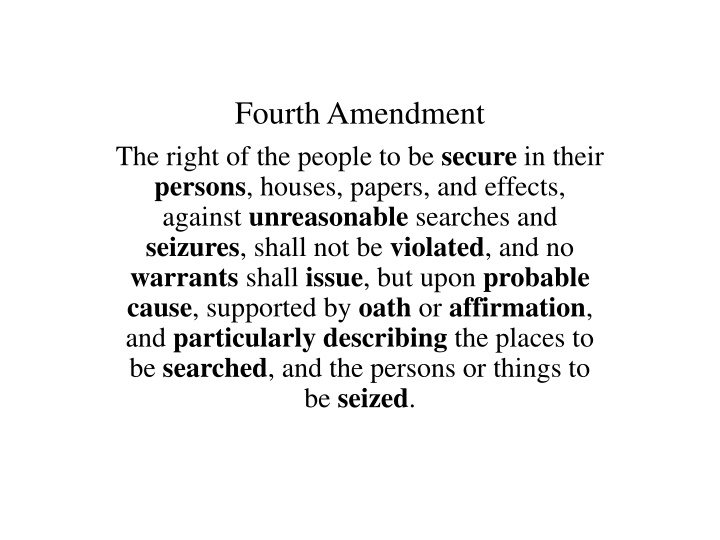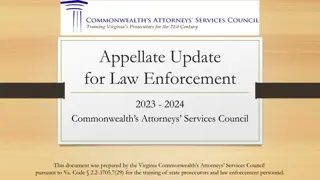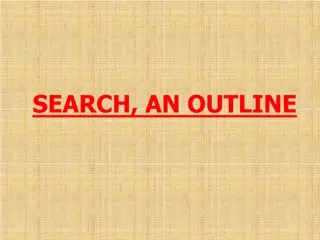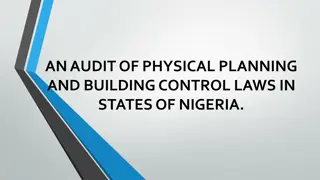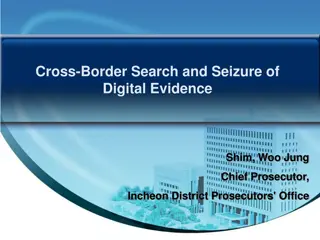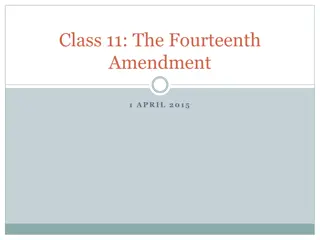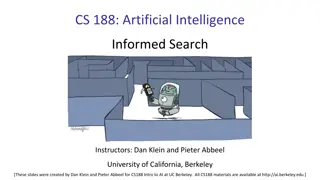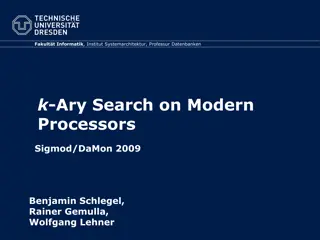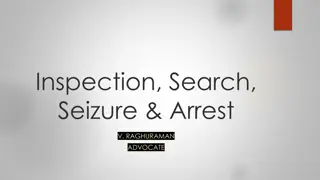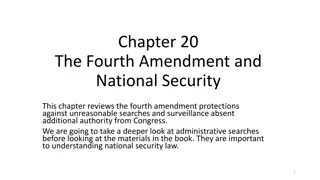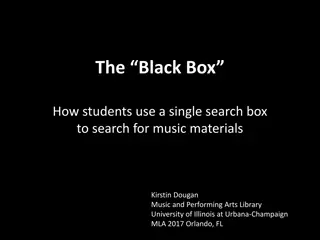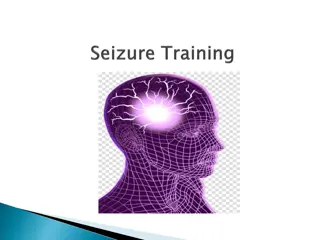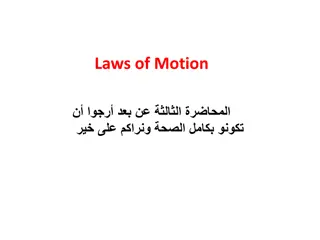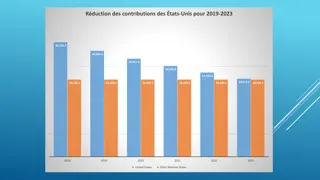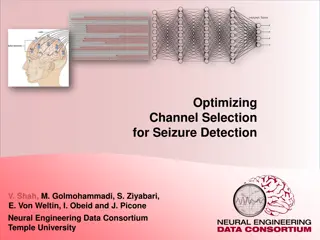The Fourth Amendment: Search and Seizure Laws in the United States
The Fourth Amendment of the United States Constitution protects individuals from unreasonable searches and seizures by the government. It outlines the requirements for obtaining a search warrant, defines a reasonable expectation of privacy, and details the types of searches allowed without a warrant. This summary covers the basics of search and seizure laws in the U.S. including warrantless searches, types of searches, and exceptions to the privacy rights guaranteed by the Fourth Amendment.
Download Presentation

Please find below an Image/Link to download the presentation.
The content on the website is provided AS IS for your information and personal use only. It may not be sold, licensed, or shared on other websites without obtaining consent from the author.If you encounter any issues during the download, it is possible that the publisher has removed the file from their server.
You are allowed to download the files provided on this website for personal or commercial use, subject to the condition that they are used lawfully. All files are the property of their respective owners.
The content on the website is provided AS IS for your information and personal use only. It may not be sold, licensed, or shared on other websites without obtaining consent from the author.
E N D
Presentation Transcript
Fourth Amendment The right of the people to be secure in their persons, houses, papers, and effects, against unreasonable searches and seizures, shall not be violated, and no warrants shall issue, but upon probable cause, supported by oath or affirmation, and particularly describing the places to be searched, and the persons or things to be seized.
What is a search? When the government intrudes upon an area where one would have a reasonable expectation of privacy.
Reasonable expectation of privacy A reasonable expectation of privacy is determined by the following standards. Did the defendant expect privacy in the location to be searched? Would society hold the defendant s belief to be reasonable?
Searches with a warrant Have to have been issued by a neutral magistrate (judge). The warrant must describe the things to be seized and the person or place to be searched. Probable cause must be established. Probable cause is based on the totality of circumstances (Gates v. U. S.). Hearsay, and illegally obtained evidence are allowed to demonstrate probable cause. Judges take into consideration reliability of the source, basis of the sources knowledge and verification. The warrant must be used in a reasonable amount of time. A federal procedure requires it to be used within ten days. The person does not have to be at home or at the location. Once the government has located the object for which the warrant was granted the search must stop.
No reasonable expectation of privacy in the following: Trash left by the curb. (Greenwood v. California) Inmates in their prison cells. (Hudson v. Palmer) Governmental employees in their workplace. (Ortega v. O Conner) Speaking with a police informant or a wired informer. The speaker assumes the risk in the conversation. (Hoffa v. U.S.) Phone calls made on cellular phones. (Cell phones can be intercepted by certain radios tuned to the correct frequency.)
Kinds of Searches Looking around in a home, apartment or other dwelling. Looking into an automobile. Wire taps. Taking blood. Taking urine. Looking through binoculars and telescopes. X-rays. Looking through pockets and purses. Dog sniffing.
Legal Warrantles Searches Searches after an arrest Consent searches Plain view Stop and Frisk Hot pursuit Automobile Inventory Boarder and airport searches Exigent circumstances Probationers and parolees
Limits to the Exclusionary Rule Independent source rule: Evidence will be admitted where it is obtained from a source independent of the 4thAmendment violation. Inevitable discovery rule: Evidence, which would have been discovered through the normal course of police investigation.
Fruits of the Poisonous Tree The exclusionary rule also applies not only to evidence obtained as a direct result of an illegal or unconstitutional search, but also to all evidence obtained indirectly from such search. That would include witnesses, statements, identifications not made in the courtroom, information, and object, which would not have been discovered except for the initial illegal or unconstitutional search. (Wong Sun v. United States)
Harmless v. Reversible Error Where the illegally seized evidence is erroneously admitted, the conviction must be automatically reversed, unless the state or federal government can demonstrate beyond a reasonable doubt (about 90 % probability) that the verdict was not based on or prejudiced by, in any way, the illegal evidence.
Weeks v. United States (1914) Issue: Did the search and seizure carried out by federal law enforcement officials violate Week s rights under the Fourth Amendment? Could the evidence used obtained be used against him? Vote: 9-0 Decision: federal officials violated Week s Fourth Amendment rights because they lacked a proper warrant. His property was returned and could not be used against him.
Olmstead V. United States (1928) Issue: Was the use of evidence obtained through a telephone wiretap a violation of an individuals Fourth Amendment rights? Vote: 5-4 Decision: The Court upheld Olmstead s conviction. Wiretaps on the telephone lines were not an invasion of the defendant s house or office.
Mapp v. Ohio (1961) Issue: Can evidence obtained through an illegally conducted search be used to convict a person of violating state law? Vote: 6-3 Decision: The Court overturned Mapp s conviction. Evidence obtained in violation of the Fourth Amendment must be excluded from use in state and federal court.
Katz v. United States (1967) Issue: Does placing a tap on the outside of a public telephone booth a violation of a person s fourth Amendment rights? Vote: 7-1 Decision: Justice Stewart stated the Fourth Amendment protects people, not places. It protects an individual s right even in a place accessible to the public. This case expanded the Fourth Amendment rights.
Terry v. Ohio (1968) Issue: Was the warrantless search of Terry a violation of the Fourth Amendment? Vote: 8-1 Decision: The Court decided against Terry. The policeman s stop and frisk action in this case was constitutional because it was reasonable under the circumstances.
United States v. Leon (1984) Issue: Should the exclusionary rule be modified to allow the use of evidence gained by police officers making a search ion good faith but with a warrant issued in error? Vote: 6-3 Decision: The Court ruled against Leon because the officers though the warrant was legal and acted in good faith.
New Jersey v. T.L.O (1985) Issue: Does the Fourth Amendment apply to the states and therefore actions by school officials? Should school officials be held to the same strict Fourth Amendment standards as law- enforcement officials? Vote: 6-3 Decision: The search was reasonable and did not violate T.L.O. s rights. Schools are special and student safety is essential. School officials only have to show reasonable cause and not probable cause.
Exclusionary Rule Any illegally or unconstitutionally obtained evidence may not be used in court. (Mapp v. Ohio). In addition, the defendant must have standing for the exclusionary rule to apply.
